- Web
- OVH
- 02 June 2018 at 18:34 UTC
-

Like most known web hosts, OVH offers to secure your site in HTTPS with an SSL certificate (whether free or paid).
But, it also makes it possible to secure several sites with different domains thanks to the multisite system and the SSL activation by site.
In other words, you can order a web hosting to host multiple sites (thanks to multisites) and secure them all for free thanks to a multidomain SSL certificate generated via Let's Encrypt.
Nevertheless, you should know that the activation of HTTPS is not inconsequential and can be problematic if your website is not well configured.
To avoid making common mistakes when switching to HTTPS, refer to our article : Avoid common problems related to securing your website in HTTPS
Note that if you have used the OVH multisite system, you will need to wait 2 hours before generating your SSL certificate.
Otherwise, it may not work or may not be enabled on all your sites.
To begin, log in to your OVH manager and go to the "Multisite" tab of your web hosting.
Then, click on the icon on the right of the desired domain and click Edit.
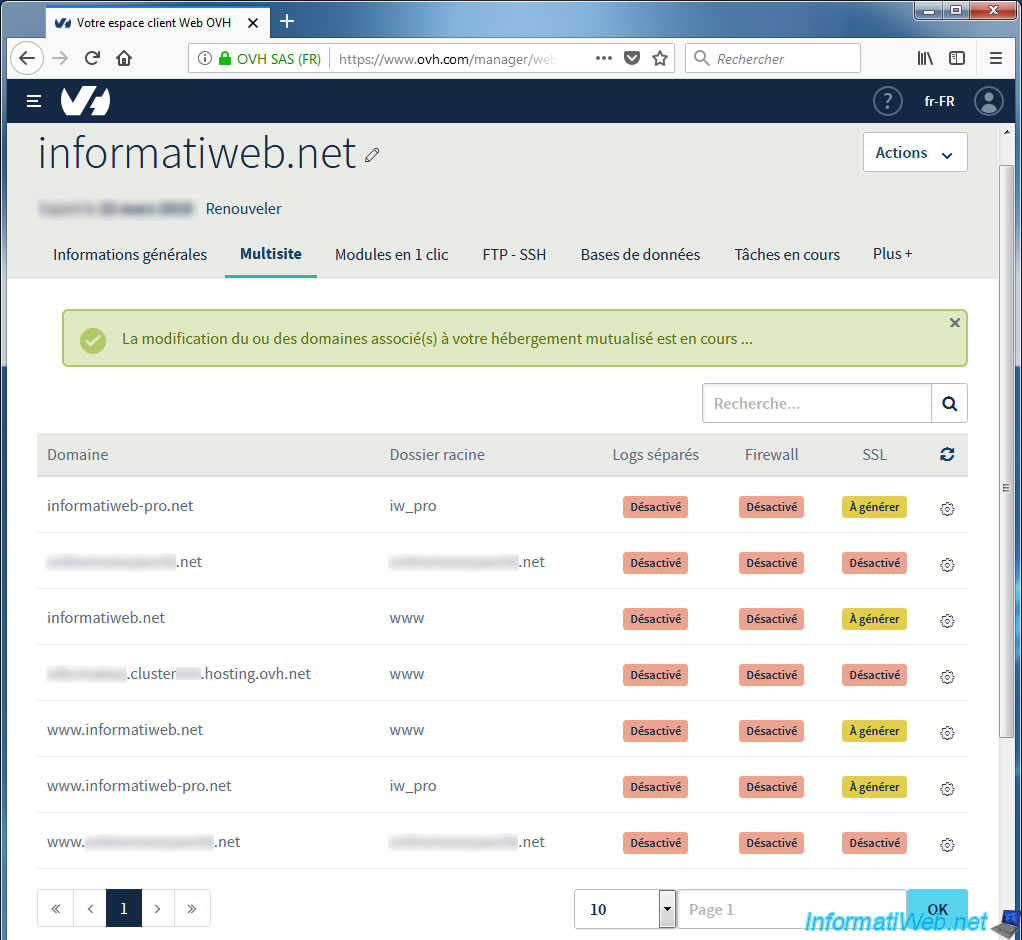
Then, check the SSL box to enable HTTPS support for this domain.
Note : do the same for all domains that must be accessible via HTTPS.
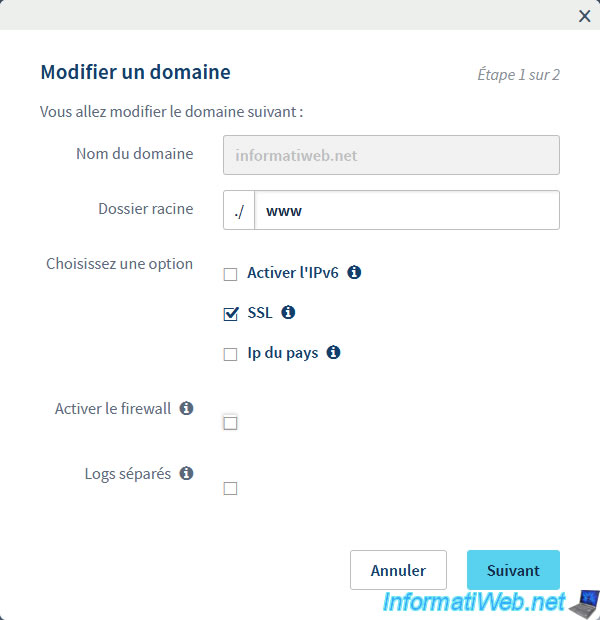
Once you have enabled SSL support for all desired domains, wait 2 hours (if you have made other changes in the Multisite tab), then go to the "General Information" tab.
In the "Configuration" block, click the "Actions" button next to "SSL Certificate".
Click on "Order an SSL Certificate".
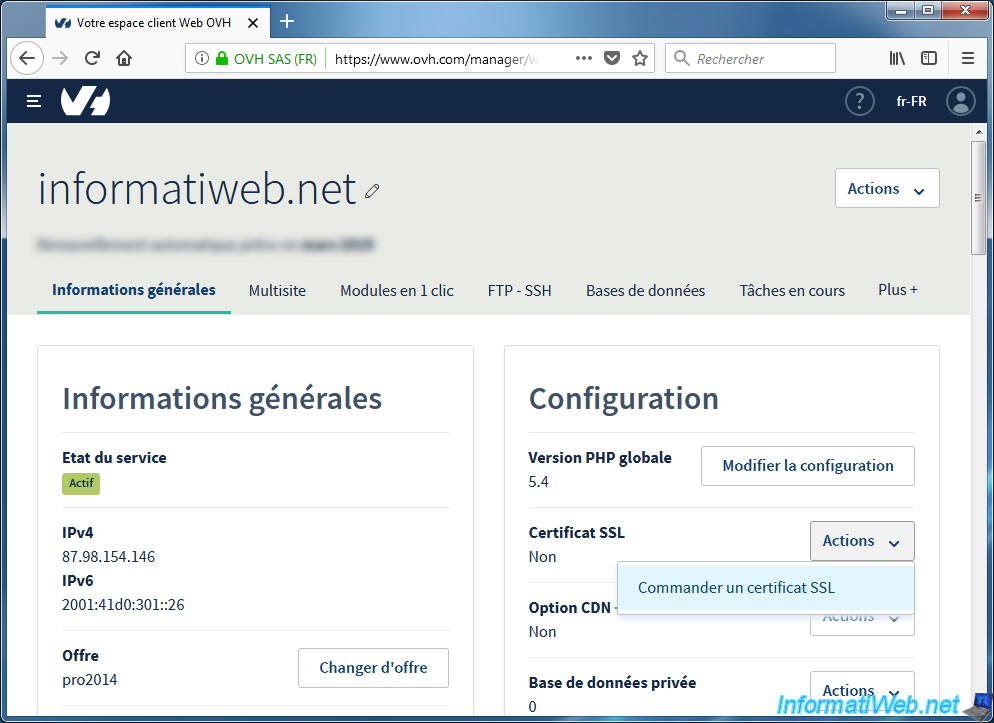
As you can see, you can order :
- a free SSL certificate that will be generated through the free certification authority : Let's Encrypt
- a paid certificate
OR import a custom SSL certificate that you ordered from GeoTrust or Symantec SSL (for example).
Note : the free SSL certificate will be automatically renewed by OVH. So, don't worry about the expiration date of it.
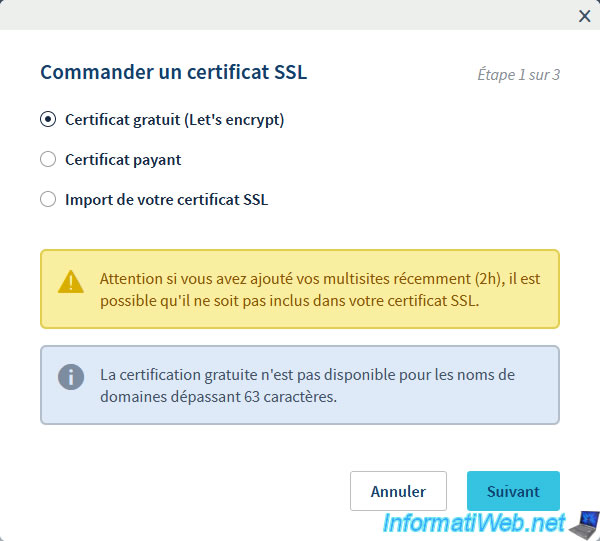
Wait while enabling SSL on your web hosting.
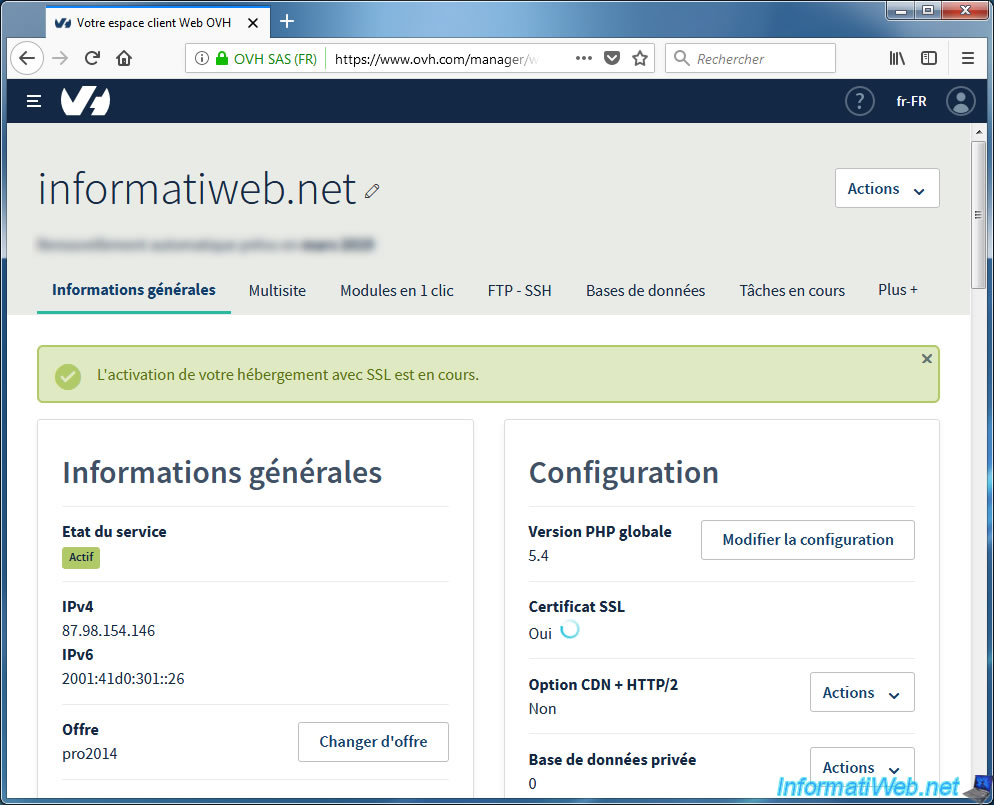
By testing the HTTPS version of our hosting, we noticed that stability issues were occurring with the configuration we were using.
Notably, stability issues, blank pages, or SPDY protocol error messages (ERR_SPDY_PROTOCOL_ERROR) on Google Chrome.
After some research on the Internet, we found this solution (which works very well).
In this case, for the HTTPS to work correctly on your web hosting, you must use "phpcgi" and not "php".
In this forum, dfreitas indicates that he modified the configuration of its hosting thanks to the ".ovhconfig" file used by OVH.
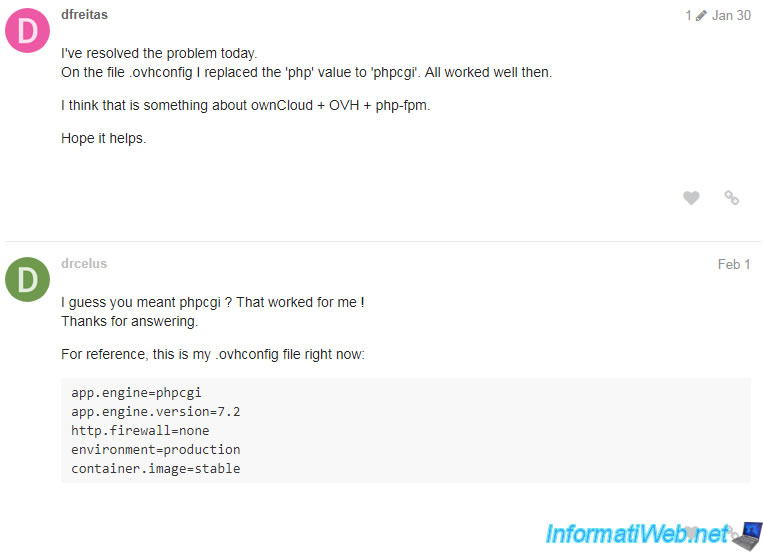
However, you can also do it directly from your OVH manager by clicking on the "Change configuration" button (next to "Global PHP version").

Change the "Engine" to "phpcgi" and click OK.
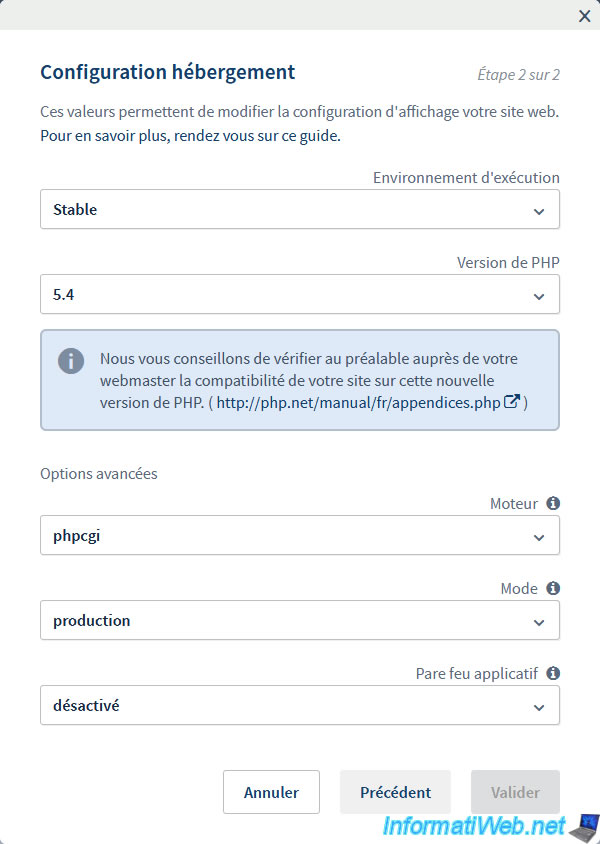
Once SSL certificate creation is complete, you will see that the SSL status of your domains will have changed from "To generate" to "Enabled".
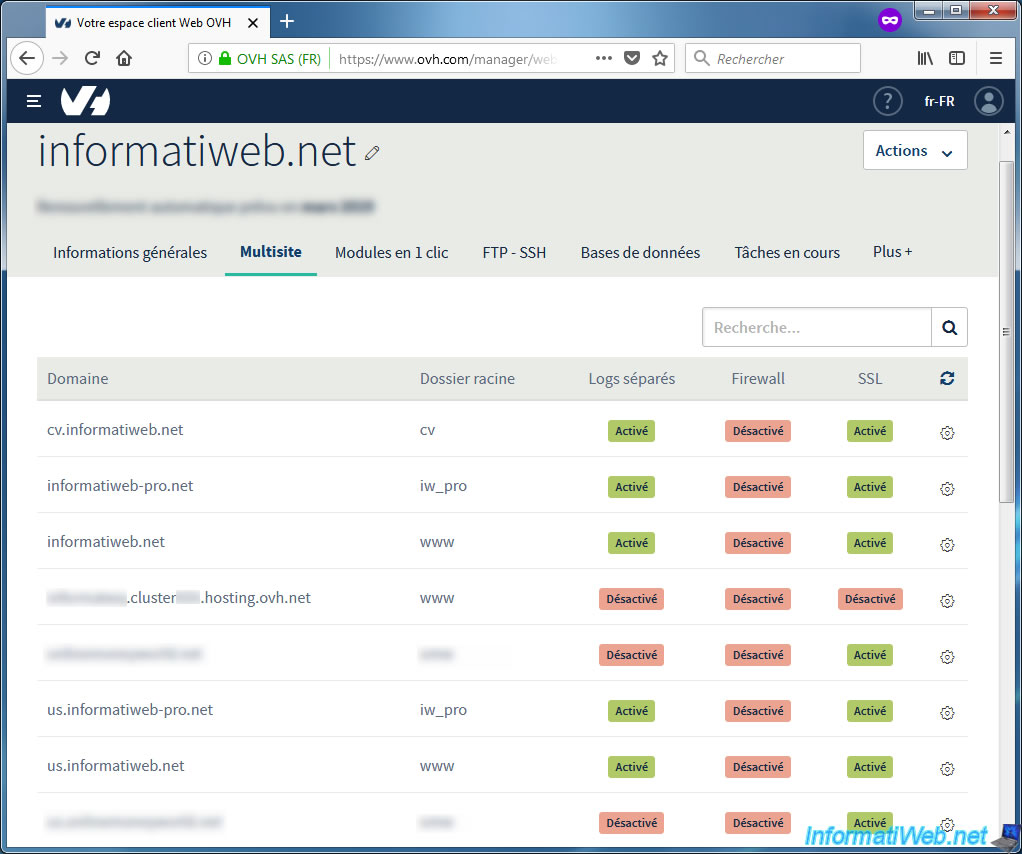
As you can see in these images, our 2 IT websites are well secured (in HTTPS) thanks to a free SSL certificate provided by Let's Encrypt.
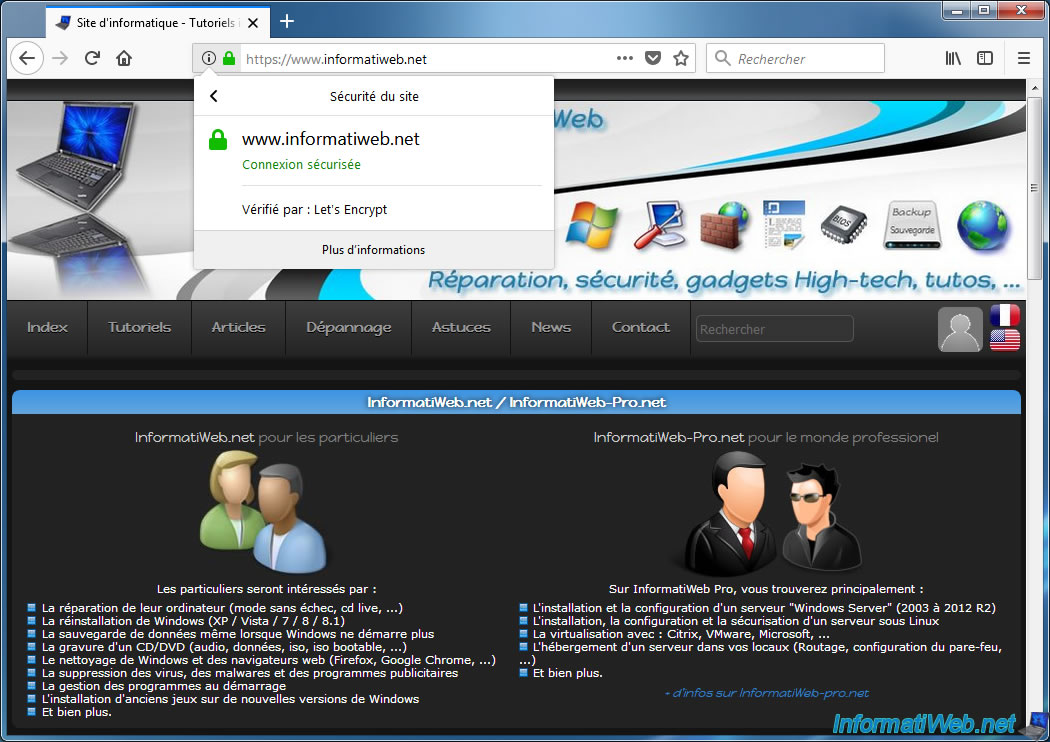
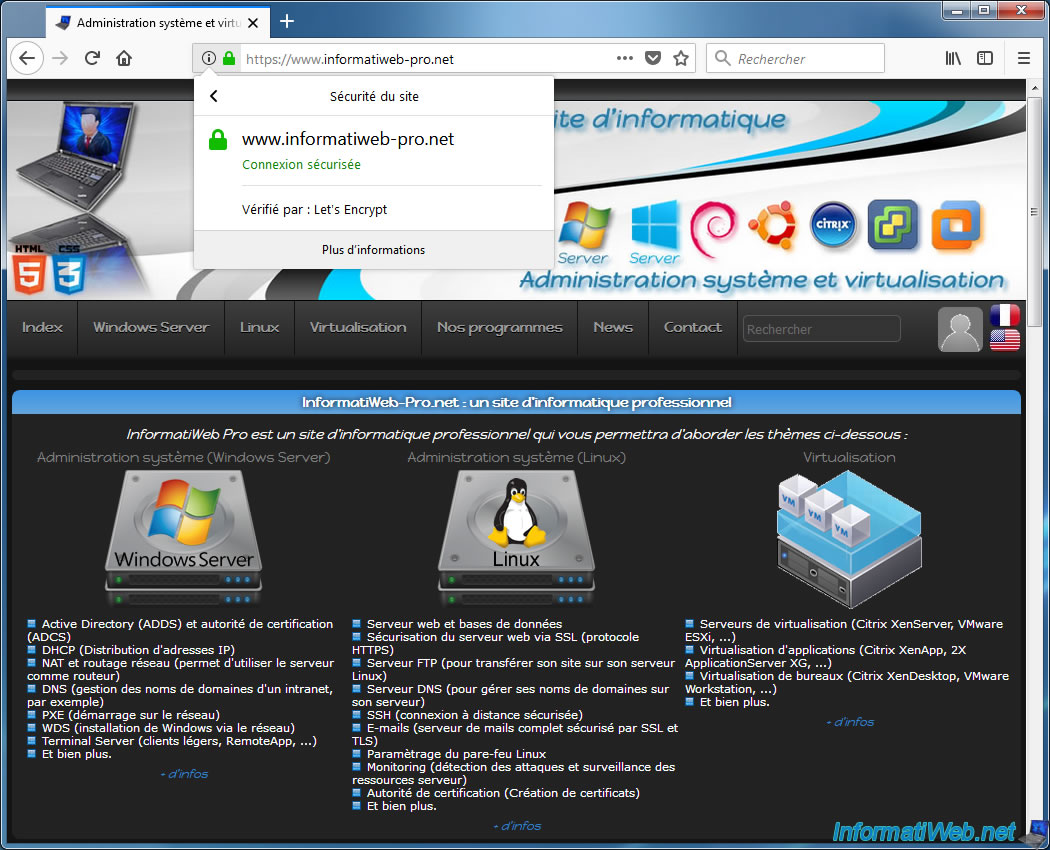
Source : Managing SSL certificates on a Web Hosting plan - OVH.
Share this tutorial
To see also
-

Web 11/21/2015
Host your CakePHP 2 website at LWS, OVH or 1and1
-

Web 7/2/2013
OVH - Change contacts of your domain
-

Web 5/18/2018
OVH - Multisite option for your web hosting
-

Web 7/22/2013
Transfer a .net domain from OVH to LWS.FR

You must be logged in to post a comment